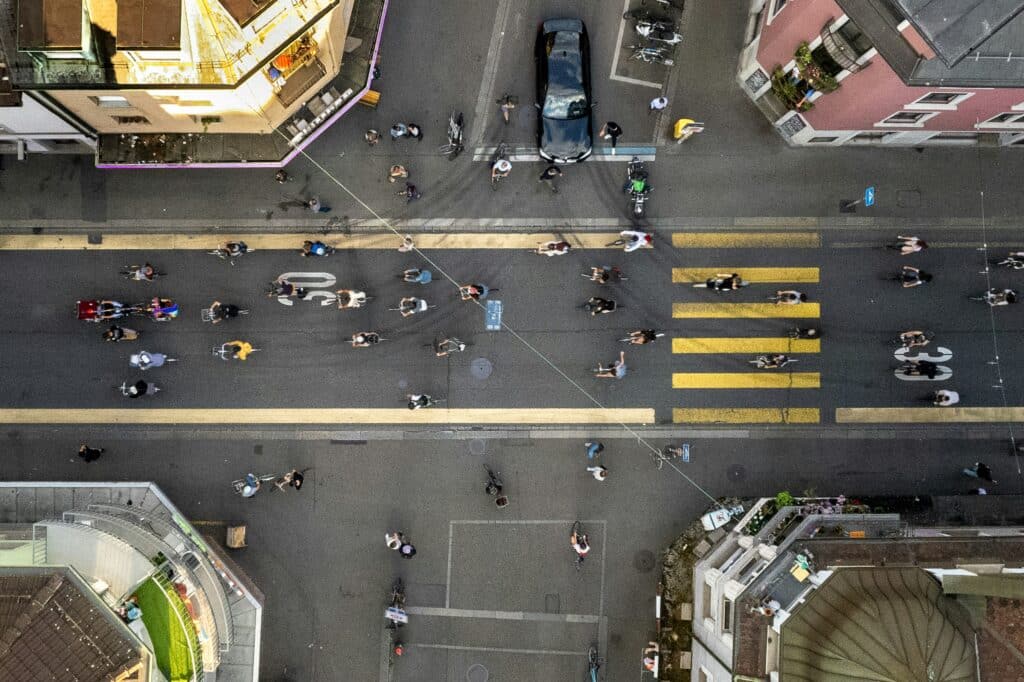A Progress Report on the Measurement of European Freight Transport Emissions
In this opinion piece Alan McKinnon, Professor at Kuehne Logistics University takes stock of the progress made in the measurement and reporting of carbon emissions from cargo movement over the past 15 years and shares his reflections on the challenges and opportunities that lie ahead for freight carbon accounting.
This article by Alan McKinnon, Professor at Kuehne Logistics University, originally appeared in the European Transport Regulation Observer ‘Greening European Cargo Operations’ (September, 2021).
The old business maxim that ‘if you don’t measure it, you can’t manage it’ applies as much to freight transport emissions as to any other business metric. Users and providers of freight services need to know how much CO2 they are emitting to be able to set and deliver carbon reduction targets.
Over the past 15 years, substantial progress has been made in the measurement and reporting of carbon emissions from the movement of cargo. The subject has generated a large literature of reports and journal papers and attracted the attention of a host of organisations keen to give their members advice on carbon footprinting. The techniques for measuring emissions have been refined, new online tools, most notably EcoTransIT, have been developed to facilitate the process, and there has been much greater harmonisation of methodologies, particularly with the wide adoption of the EN 16258 standard and the Global Logistics Emissions Council (GLEC) framework.
The proportion of businesses measuring their freight emissions has also been increasing, though in some parts of the freight market still falls well short of 100%. Two recent European surveys have indicated the current extent of emission measurement in the logistics sector. The first survey of around 90 businesses found that 89% of larger logistics providers and 83% of shippers (i.e. cargo owners) were measuring these emissions, the former demonstrating a much greater capability to disaggregate the data and make it available externally. In the second survey, only 43% of 800 small and medium-sized road carriers claimed to be able to measure their emissions.
Taken together, these survey results provide an overview of what might be called the chain of emission measurement in the logistics sector. In Europe, shippers outsource most of their freight transport to logistics providers, many of whom in turn sub-contract much of the work to small carriers. At both levels in this ‘chain’, outsourcing of the activity should effectively transfer responsibility for the measurement of related emissions. It is, after all, the company operating the assets and burning the fuel that can apply the more accurate ‘energy-based approach’ to emission measurement. Where carriers and/or logistics providers are unable or unwilling to supply the emissions data, the chain is broken, and shippers left with little choice but to use the inferior ‘activity-based approach’ to calculating freight emissions, using tonne-km data and industry-average carbon intensity values.
There clearly needs to be greater collection and sharing of freight emission data across the supply chain, though this is difficult to achieve, partly because of the nature and structure of the road haulage industry. The European industry, which handled 76% of EU inland freight tonne-kms in 2019, is highly fragmented, comprising over half a million small carriers locked in intense competition and typically earning small profit margins. Incentivising or requiring such an enormous population of carriers to carbon footprint their operations, particularly at a client or consignment level, is a major challenge. It can be made a legal obligation, though experience in France casts doubt on the effectiveness of this approach. The procurement procedures of shippers and larger logistics providers can exert stronger pressure on carriers to disclose emission data, though usually fail to do so. Carriers often offer as an excuse for not collecting CO2 data that their clients seldom ask for it. Some carriers also fear that divulging commercially-sensitive fuel-related data might weaken their negotiating position and exert downward pressure on freight rates. Such fears must be allayed in the pursuit of low carbon logistics.
Vehicle manufacturers also have a role to play in improving the carbon transparency of road freight operations. It is often claimed that they capture fuel consumption data from trucks they have sold to monitor their ongoing performance, though do not routinely share it with operators. They could make this data more widely available and give operators more guidance on the measurement and management of fuel consumption and emissions.
Looking to the future, carbon accounting in the freight sector is also likely to be enhanced in other ways. The ‘system boundary’, within which emissions are calculated, will be extended from tank-to-wheel (TtW) to well-to-wheel (WtW) estimates and beyond that to embrace embodied emissions in the vehicles and infrastructure as well as those associated with administration and IT. Only when the carbon auditing system is truly holistic will it be possible, for example, to determine the net GHG savings from freight modal shift, particularly where this involves expanding the infrastructural capacity of rail and inland waterway networks. The granularity of freight carbon measurement will also have to increase to give analysts the disaggregated data they will need for the eco-labelling of products, last-mile delivery options, recycling services etc. More granular data will also allow businesses and public policy-makers to track with greater accuracy incremental improvements in the carbon efficiency of freight transport operations. At present, such improvements can be hard to detect because of over-reliance on industry-default values of carbon intensity and a failure to regularly recalibrate emission factors in line with technology advances and improvements in business practice.
One of the central goals of freight carbon accounting has been to produce estimates that are consistent, transparent and comparable across transport modes, operators, commodities, supply chains and geographies. As the collection of freight emission data is refined, digitalised and innovated in other ways, we must ensure that this drive for consistency, transparency and comparability is strongly maintained.







